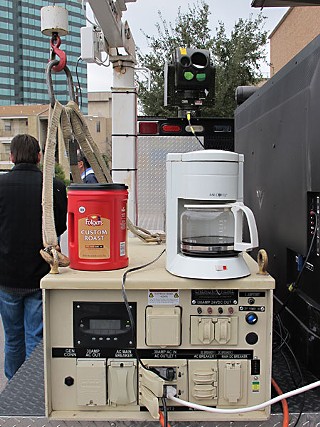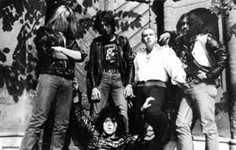How Green Is My Military?
Testing the military's (green) might
By Richard Whittaker, Fri., Nov. 15, 2013

Napoleon said that an army marches on its stomach. The modern army eats batteries. This week, military staffers and green tech firms met in Austin for the Defense Energy Summit and Technology Showcase. Part trade show, part lecture series, attendees discussed the question of how to create a greener, more efficient military.
The U.S. military's impulses can seem schizophrenic: As summit attendees discussed water efficiency and exotic-material portable wind turbines, the Department of Defense roiled with controversy about its next-generation battle tank, the Ground Combat Vehicle – at 84 tons, it's double the weight of the Bradley Fighting Vehicle it replaces. Traditionally, some green activists have been squeamish, even openly dismissive, about the idea of an eco-army, calling it greenwashing. The overwhelming sentiment of attendees here was that the eco-pioneers are well-intentioned, but a little naive. David Minster of security and technology firm Sandia National Laboratories noted that much green tech was designed by idealists – a blend of start-up-culture zealots and enviro-enthusiasts – and secure systems that would comply with military procurement specifications weren't at the top of their design agendas.
Overall, the big question was about power: how to generate it, how to store it, how to transport it. According to Lt. Col. Keith Matiskella, chief of requirements for the Rapid Equipping Force, energy is the key to military operations, but also an impediment. Last year, his office assessed the average load of a soldier in combat at 110 pounds. The issue was simple: "Batteries and batteries and batteries." By reassessing logistics and changing technical specs, they cut battery weight by 33%. He said, "If you tell someone they can carry two to three pounds less batteries, they say, 'Great, I can carry more bullets.'"
Large, permanent military facilities face the same eco challenges that any large business faces, but much of the more specific discussion rotated around the unique challenge of supporting troops and personnel in the field. That doesn't just mean combat operations. As Texas Army National Guard energy manager Amanda Cambre noted, two of the force's biggest deployments in recent years have been in response to Hurricane Katrina and to the Bastrop fires. Both came with unique logistical challenges. For example, during Katrina, supply vehicles were stopping at every gas station they saw to top off, because they didn't know when they would next see fuel. But deeper than that, there are complex technical issues, like finding ways to transfer between power sources quickly and smoothly in a field hospital. Cambre said, "Those three minutes when they had to switch over could be a matter of life and death."
Got something to say on the subject? Send a letter to the editor.








